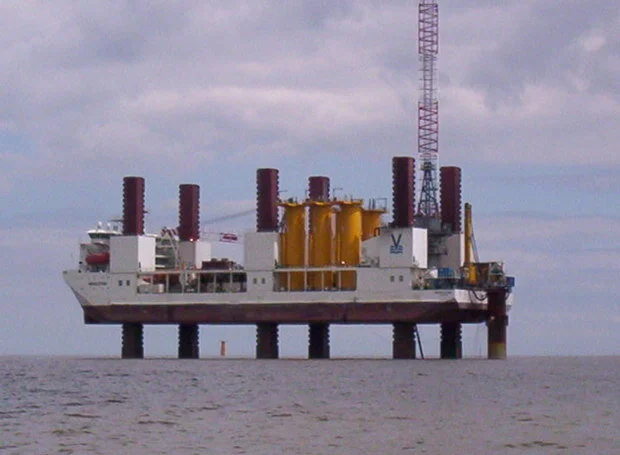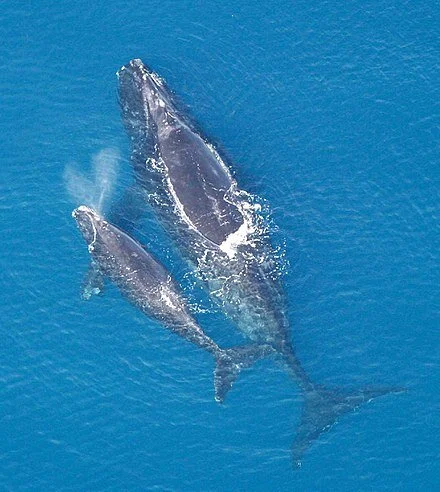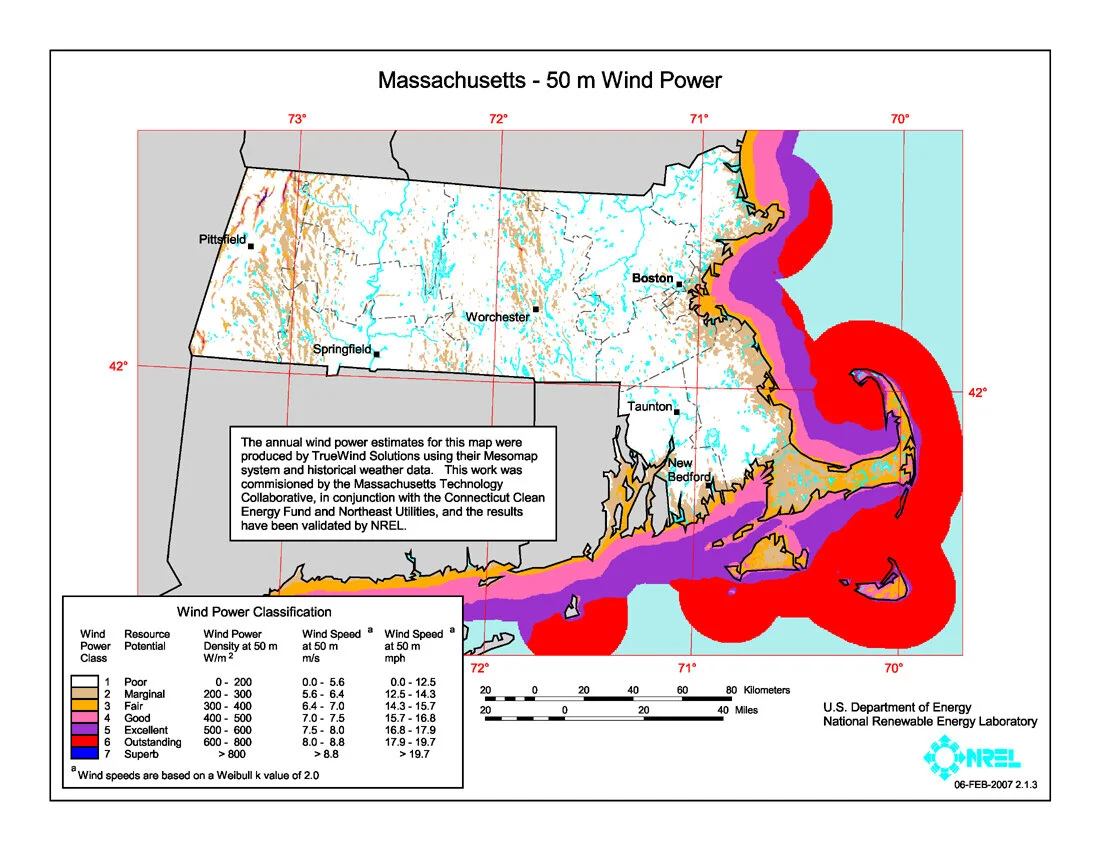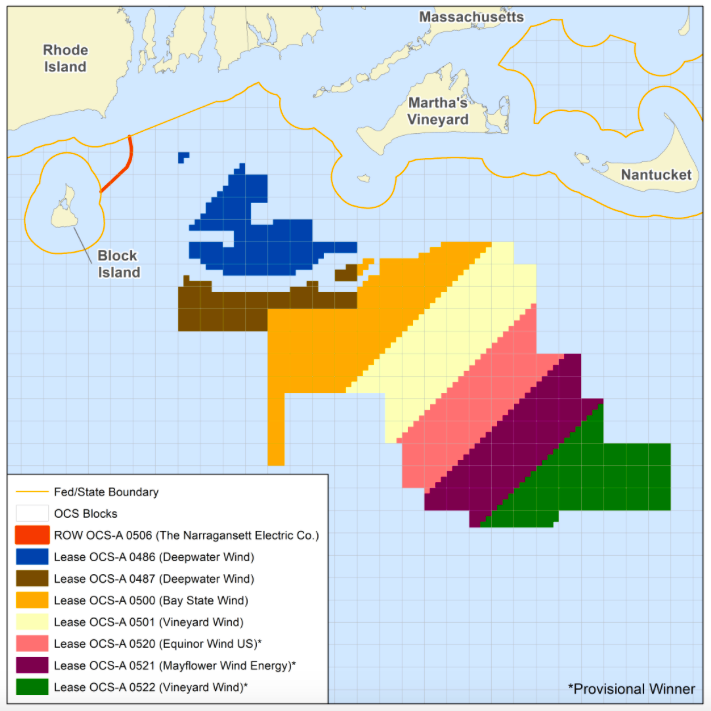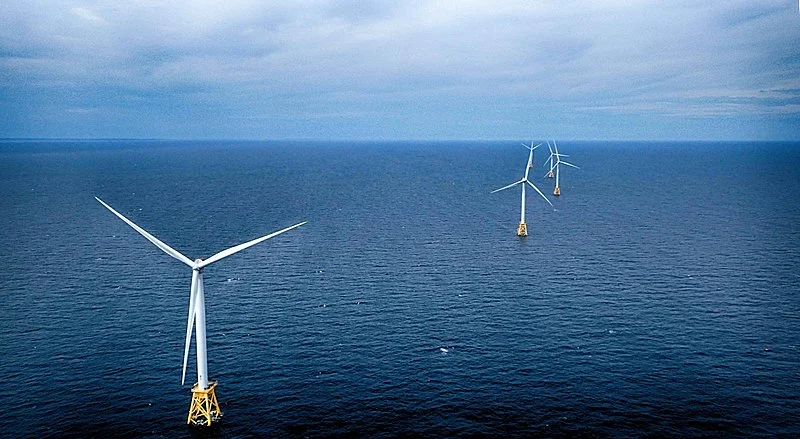
Turbine installation vessel to be used for 2 wind farms south of New England
A turbine installation vessel
From The New England Council (newenglandcouncil.com)
“Eversource and Ørsted reached an agreement to charter the first American-made turbine installation vessel, for two adjacent wind farms that the two companies are developing between Long Island, N.Y., and Martha’s Vineyard.
The $500 million vessel, being built by a consortium led by Dominion Energy in a Texas shipyard, will enable Eversource and Ørsted to be the first wind farm developers to use a ship that is qualified under the Jones Act to install offshore turbines. The ship, which can carry up to six turbines at one time, is expected to be ready by the end of 2023.
“Our competitors will be forced to use a feeder barge,” Eversource CEO Joe Nolan said. “That’s why this is a game-changer for us.”
The New England Council applauds both Eversource and Ørsted for this innovative initiative. Read more from the Boston Globe.
Lisa Prevost: European study finds wind turbines don't affect lobster harvest
European lobster
Via Energy News Network ( https://energynews.us/) and ecoRI News (ecori.org)
In New England, offshore wind developers and the fishing industry continue to grapple with questions over potential impacts on the region’s valuable fisheries.
A recent European study not only offers good news on that front, it also provides a template for how the two industries can work together.
Research conducted over a six-year period concluded that the 35 turbines that form the Westermost Rough offshore wind facility, about 5 miles off England’s Holderness coast, have had no discernible impact on the area’s highly productive lobster fishing grounds.
The overall catch rate for fishermen and the economic return from those lobsters remained steady from the study’s start in 2013, before the facility’s construction, to its conclusion last year, according to the lead researcher, Mike Roach, a fishery scientist for the Holderness Fishing Industry Group, which represents commercial fishermen in the port town of Bridlington, England.
“It was quite a boring result,” Roach said. “All my lines are flat.”
Ørsted, the Danish energy giant and developer of the offshore wind facility, contracted with Holderness’s research arm to carry out the study, as the group has its own research vessel. The collaborative approach, Roach said, has made the findings all the more credible to local fishermen, who were initially certain that the energy project would destroy the lobster stocks.
“We did the research the same way a fisherman would fish — the same gear types, same bait, deploying in the same way,” Roach said. “We were basically mirroring the commercial fishing method in the area. And that has allowed the fishermen to relate directly to the fieldwork.”
Hywel Roberts, a senior lead strategic specialist for Ørsted and a liaison with the researchers, called the collaboration “a leap of faith on both sides to join together and agree at the outset to live and die by the results.” He noted that the level of research also went well beyond what was required for government permitting.
Ørsted announced the study’s results last month in a press release, even as Roach is still in the process of getting the research approved for publication in a peer-reviewed journal.
It’s no wonder the European-based wind developer was eager to share the news more widely, as the fishing industry has proven to be a powerful force in slowing the progress of offshore wind development off the Northeast coast, such as the Vineyard Wind 1 project.
Last year, the Bureau of Ocean Energy Management announced it was pausing the approval process for Vineyard Wind 1, a joint venture between Copenhagen Infrastructure Partners and Avangrid, to be constructed off Martha’s Vineyard. The agency said it wanted to devote more study to the cumulative environmental effects of the many offshore wind projects lining up for approval.
In June, the agency issued a supplemental environmental impact statement that concluded that the cumulative impacts on fisheries could potentially be “major,” depending on various factors. The federal agency is considering requiring transit lanes between turbines to better accommodate fishing trawlers, a design change Vineyard Wind argues is unnecessary and could threaten the project’s viability.
The developer has proposed separating each turbine by a nautical mile. The transit lanes would require additional spacing.
A final report is expected in December.
The outcome of the Holderness study has “very important” implications for wind projects all over, Roberts said.
“The lobster fishery there is one of the most productive in Europe, and we were tasked with building a wind farm right in the middle of it,” Roberts said. “If it can work in this location, we think it can work in most places around the world.”
Ørsted even brought Roach and one of the Holderness fishermen to Massachusetts last year to spread the word to worried lobstermen about the minimal impact of Westermost Rough.
Roach said he’d like to think his findings “eased some concerns” in New England. However, he said he disagrees with Ørsted that the outcome in the North Sea is applicable to other areas of the world, where habitats and the ecology of the species could be very different.
“There are lessons to be learned and guided by, but I can’t say it’s directly transferable,” he said.
Lisa Prevost is a journalist with Energy News Network, an Institute of Nonprofit News (INN) member that has a content-sharing agreement with ecoRI News.
Study is aimed at protecting right whales in offshore windpower areas
North Atlantic right whale mother with calf
From ecoRI News (ecori.org)
Ørsted is funding a project to study and protect endangered North Atlantic right whale during surveys, construction and operation of its U.S. offshore wind facilities such as Bay State Wind and Revolution Wind.
Using data collected from an aerial, unmanned glider and two sound-detection buoys, researchers from the University of Rhode Island, Rutgers University and the Woods Hole Oceanographic Institution will examine the habitat and behaviors of right whales in the wind-lease areas awarded to Ørsted.
An estimated 400 North Atlantic right whales remain, fewer than 100 are breeding females.
The oceanographic data will help studies of additional fish species and improve forecasting for severe storms and other weather, according to Ørsted. The three-year initiative is called Ecosystem and Passive Acoustic Monitoring (ECO-PAM).
Vineyard Wind watch
A key offshore wind report is expected this week from the Coast Guard. The draft of the Massachusetts and Rhode Island Port Access Route Study (MARIPARS) will recommend wind farm layouts, spacing, and transit lanes for vessel safety, navigation, and search-and-rescue operations.
The draft report will be followed by a 45-day comment period. The Coast Guard is expected to finalize the report in April.
At its nearest point, the Vineyard Wind project is about 14 miles from the southeast corner of Martha’s Vineyard and a similar distance from the southwest side of Nantucket. (BOEM)
At its nearest point, the Vineyard Wind project is about 14 miles from the southeast corner of Martha’s Vineyard and a similar distance from the southwest side of Nantucket. (BOEM)
The recommended wind-facility grid is expected to inform the forthcoming draft environmental impact statement (EIS) from the Bureau of Ocean Energy Management (BOEM) for the Vineyard Wind project. If adopted by BOEM, MARIPARS will accelerate other wind proposals in the federal lease areas off southern New England.
BOEM won’t give any hints about when it will release the expanded EIS for the Vineyard Wind project. BOEM media representatives will only say to look for updates at its Vineyard Wind Web site.
The expanded EIS will focus on fishing and other impacts of offshore wind development in the region. The initial EIS was expected by the end of last year but pushed until early 2020.
The initial EIS was delayed last summer after the National Marine Fisheries Service and the National Oceanic and Atmospheric Administration declined to endorse the report.
After hearings and a public comment period on the upcoming EIS, a record of decision from BOEM on the Vineyard Wind project isn’t likely until December. If approved, major work on the 800-megawatt wind facility, such as pile driving, can’ commence until May 1, 2021. An agreement to protect North Atlantic right whales with three environmental groups signed last year prohibits such work between January and April.
Foster wind moratorium
The Foster (R.I.) Town Council recently approved a 180-day moratorium on wind-turbine development. There are no proposals before the town, but the council wants to give the Planning Board time to write an ordinance for future wind development.
“There’s speculation whether companies would be interested in coming into our town and we want to make sure we had things in order,” Town Council president Denise DiFranco said at the council’s Jan. 23 meeting.
The council can extend or shorten the moratorium. Residential wind systems less than 100 kilowatts are still permitted.
Virginia wind
Virginia is upping its involvement in offshore wind with a vision to reach World War II levels of maritime industrial activity. Last September, Dominion Energy, the owner of natural-gas pipelines and power plants, including the Manchester Street Power Station, in Providence, announced plans for a 2,600-megawatt wind facility off Virginia Beach. Gov. Ralph Northam has since set a state energy target of 30 percent renewable power by 2030 and 100 percent by 2050.
Dominion is also developing a two-turbine offshore test site called the Coastal Virginia Offshore Wind Project with Ørsted. The project could be operational by late this year.
Like many states in the Mid-Atlantic and Northeast, Virginia wants to expand its ports to build maritime centers for wind turbine construction, maintenance, and shipping. An estimated 14,000 jobs could be created by the new maritime industries in the state.
Tim Faulkner is an ecoRI News journalist.
Tim Faulkner: Future of offshore wind hangs on agency's report
Progression of expected wind turbine evolution to deeper water
From ecoRI News
The forthcoming report from the federal Bureau of Ocean Energy Management (BOEM) on the cumulative environmental impacts of the Vineyard Wind project will determine the future of offshore wind development.
BOEM’s decision isn’t just the remaining hurdle for the 800-megawatt project, but also the gateway for 6 gigawatts of offshore wind facilities planned between the Gulf of Maine and Virginia. Another 19 gigawatts of Rhode Island offshore wind-energy goals are expected to bring about more projects and tens of billions of dollars in local manufacturing and port development.
Some wind-energy advocates have criticized BOEM’s 11th-hour call for the supplemental analysis as politically motivated and excessive.
Safe boat navigation and loss of fishing grounds are the main concerns among commercial fishermen, who have been the most vocal opponents of the 84-turbine Vineyard Wind project and other planned wind facilities off the coast of southern New England.
Last month, Rhode Island state Sen. Susan Sosnowski, D-New Shoreham and South Kingstown, gave assurances that the Coast Guard will not be deterred from conducting search and rescue efforts around offshore wind facilities, as some fishermen have feared.
“The Coast Guard’s response will be a great relief to Rhode Island’s commercial fishermen,” Sosnowski is quoted in a recent story in The Independent. “We have many concerns regarding navigational safety near wind farms, and that was the biggest.”
The anticipated release of the BOEM report coincides with President Trump’s efforts to weaken environmental impact reviews for all energy proposals, including wind, coal, and natural gas. National Environmental Policy Act (NEPA) reviews have slowed pipeline projects such as Keystone XL and, as of last summer, Vineyard Wind. Both industries praised the move to loosen environmental rules. Environmentalists, meanwhile, fear that the removal of terms such as “cumulative,” "direct," and "indirect" from NEPA’s directives will nullify future federal efforts to address the climate crisis.
Once the expanded environmental impact statement is released, BOEM will offer a comment period and hold public hearings
Stephens leaves Vineyard Wind
Barrington native and Providence resident Erich Stephens resigned at the end of 2019 from Vineyard Wind, a company he helped found in 2009 and is now co-owned by Avangrid and Copenhagen Infrastructure Partners. The original wind company was called Offshore MW. Prior to Vineyard Wind, Stephens was head of development for Bluewater Wind, one of the first U.S. offshore wind companies.
Stephens has considerable roots in Rhode Island. He attended Barrington High School and received his undergraduate degree from Brown University. He was founder and executive director of People’s Power & Light, now called the Green Energy Consumers Alliance. He was also a founding partner of Solar Wrights, a residential solar company that was based in Barrington and moved to Bristol. The company was later acquired by Alteris Renewables. Stephens also worked for two of Rhode Island’s first oyster farms.
More megawatts
New York plans to add 1,000 megawatts of offshore wind power to the 1,700 megawatts it awarded last summer to offshore wind projects that will deliver electricity to Long Island and New York City.
The state also announced it’s taking bids for $200 million in port development projects that will support the offshore wind industry.
The recent notifications are part of the state’s Green New Deal, which aims for 9 gigawatts of offshore wind by 2035 and 20 large solar arrays, battery-storage facilities, and onshore wind turbines in upstate New York. The state aims for 100 percent renewable energy by 2040.
The latest offshore wind projects consist of the 880-megawatt Sunrise Wind facility, developed by Ørsted and Eversource Energy, to power Manhattan. Long Island will receive up to 816 megawatts from the Empire Wind facility, developed by Equinor of Norway.
Pricing for the projects hasn’t been made public.
Offshore leader
Based in Denmark, Ørsted is the early leader in the size and number of U.S. offshore wind projects. Ørsted was awarded the 400-megawatt Revolution Wind project for Rhode Island. It’s also developing the 1,100-megawatt Ocean Wind facility in New Jersey, a demonstrations project in Virginia, and projects in Connecticut, Delaware, Massachusetts, and Maryland. The company acquired Providence-based Deepwater Wind in 2018 for $510 million.
Ocean Wind, New Jersey’s first offshore wind project, and the 120-megawatt Skipjack Wind Farm off Maryland will use General Electric’s huge 12-megawatt Haliade-X turbines. The 853-foot-high turbines are the tallest in production and have twice the capacity of the 6-megawatt GE turbines now spinning off Block Island, which are 600 feet tall.
Tim Faulkner is a journalist with ecoRI News.
The fight for Mass. offshore wind goes on
From The New England Council (newenglandcouncil.com)
Orsted and Eversource have submitted a proposal to construct an wind energy farm off the Massachusetts coast. The proposed project, named Bay State Wind, includes a 400-megawatt project and an 800-megawatt project.
The companies’ proposal for Bay State Wind comes after Orsted’s federally approved offshore wind farm, Vineyard Wind, was put on hold for further review of its impact on fish and fisherman. Orsted, however, has been working closely with various commercial and local fisherman to accommodate their practices and projects in their own wind-turbine proposal. The companies said the project would bring hundreds of construction jobs to the state and, if selected, they plan to commit hundreds of millions of dollars to direct community investments.. Orsted and Eversource have worked together before, most recently on the Revolution Wind project planned for Rhode Island.
“We are thrilled to once again help Massachusetts take the next step to grow its clean energy economy,” said Lee Olivier, Eversource executive vice president for enterprise energy strategy and business development, in a statement. “Our team has been in the local communities, meeting with residents and stakeholders, to ensure their feedback is built into Bay State Wind’s proposal, which is the most mature, comprehensive and thorough offshore wind project available.”
Tim Faulkner: Offshore wind boom continues, with snags
From ecoRI News (ecori.org)
The demand for offshore wind continues, as the designated wind zones in waters south of Rhode Island, Martha’s Vineyard and Nantucket fill with projects.
At the June 11 meeting of the Rhode Island Coastal Resources Management Council (CRMC), Grover Fugate, executive director, recounted the growing pains to accommodate as much as 22,000 megawatts of offshore wind.
“This industry has literally exploded overnight,” said Fugate, as he highlighted issues confronting several projects.
The 800-megawatt Vineyard Wind facility, for instance, is deadlocked with the National Oceanic and Atmospheric Administration (NOAA) over the project’s environmental impact statement.
“That’s not something that’s been done before in the NEPA (National Environmental Policy Act) world,” Fugate said. “So we’re not quite sure where that is going to end up.”
The Nantucket Historical Commission is seeking $16 million from the Vineyard Wind developer, according to Fugate. The island town has sought funds to compensate for adverse visual impacts the 84 turbines may have on tourism.
Connecticut recently announced it wants to add 2,000 megawatts of offshore wind to the power grid but the state lacks approved offshore wind areas.
“Connecticut, of course, does not have any offshore sources,” Fugate said. “The closest ones to Connecticut are us (Rhode Island).”
Connecticut is already signed on for 300 megawatts from the Revolution Wind project located in one of four wind-lease areas that require CRMC approval.
Rhode Island has already signed up 400 megawatts from the same wind project managed jointly by Ørsted US Offshore Wind and the Massachusetts utility Eversource.
Massachusetts has a goal of 3,200 megawatts of offshore wind by 2035. It has already agreed to buy 800 megawatts from the Vineyard Wind project and the state has issued a request for proposal for an addition 800 megawatts that may come from the second half of the Vineyard Wind lease area.
Vineyard Wind went through a lengthy and contentious review for its initial wind facility and wants to meet with CRMC about a review of the second half of its wind-zone lease.
Bay State Wind, another Eversource and Ørsted project, is also moving forward with an 800-megawatt wind project in the same region. Fugate met with Bay State Wind’s CEO and discussed how the project fails to conform with a 1-mile spacing of turbines within its grid configuration.
Fugate said Bay State Wind is using a European design that doesn’t meet the fisheries requirement for U.S. projects.
“So they are taking that back under consideration,” Fugate said.
Vineyard Wind has filed a proposal to deliver 1.2 gigawatts of wind power to New York along a 95-mile transmission line from Vineyard Wind’s second wind zone, in the easternmost section of the federal wind-lease area. In all, New York is looking for some 9,000 megawatts of wind energy.
“If you add it all up it’s about 22,000 megawatts from New York to the Cape that's under consideration,” Fugate said.
He expressed frustration with the federal Bureau of Ocean Energy Management for not requiring an extended analysis of proposed offshore wind project sites.
“If you don't get two years of baseline data you have no way of measuring the impact,” Fugate said. “That may be intentional on their part, I don't know. But we have pushed for baseline data so that you can measure before and after, so that you know what you just did and how to adjust to it. But without that baseline, we don't know what we just did.”
Cable congestion
The surge in offshore wind development has created a need for transmissions lines and onshore connections to the electric grid. Wakefield, Mass.-based Anbaric Development Partners is creating a renewable-energy center on a leased site at the former Brayton Point coal-fired power plant in Somerset, Mass. Anbaric wants to install two high-voltage electric cables from Brayton Point to serve wind facilities off the coast of Massachusetts and Rhode Island. Ørsted would also like to run two cables from its Bay State Wind project to the mainland at Brayton Point.
The transmission lines would run through the the Sakonnet River along the easternmost channel of Narragansett Bay.
Fugate noted that the passage can only accommodate two power cables because of the narrow Stone Bridge corridor between Portsmouth and Tiverton. He said the activity at Brayton Point and other wind-facility operations within Narragansett Bay will be busiest during the summer, causing congestion along the East Passage, which runs between Newport and Jamestown.
“There’s a huge interference with a lot of existing uses down there,” Fugate said.
Federal review
NOAA officials will perform a three-day review of CRMC’s overall coastal program, including a public hearing scheduled for June 18. The review, required every seven years, will culminate with a report of findings that will offer suggested and required actions needed to adhere to federal grant requirements.
In a worst-case scenario, CRMC could face sanctions, which include a loss of federal funding for CRMC’s coastal programs. More than half of CRMC’s budget comes from federal sources.
NOAA’s last evaluation of CRMC was conducted in 2010.
The public hearing will be held at the Department of Administration building, conference room A, One Capital Hill, at 6 p.m.
Matunuck seawall
Hearings are expected in the fall for phase two of a seawall project on Matunuck Beach Road, in South Kingstown, R.I. The first phase was a highly controversial and meaningful case for the CRMC, as it confronts sea-level rise and shoreline erosion from climate change.
Tim Faulkner is an ecoRI News journalist.
Eversource and Orsted to partner in 2 offshore wind projects
From The New England Council (newenglandcouncil.com):
Eversource and Ørsted have announced a partnership in two offshore wind projects off the coast of Massachusetts and Rhode Island. This partnership marks Eversource’s entrance into offshore wind energy.
Eversource is purchasing a 50 percent stake in two projects being developed by Ørsted — the Revolution Wind and South Fork Wind Farm. In addition to the wind projects themselves, the wind-power industry and state governments have committed to investing in the State Pier in New London, Conn., which will be used as a transit point for turbines and parts. The Revolution Wind partnership will deliver enough energy to power 420,000 homes and businesses in Rhode Island and Connecticut. The South Fork Wind Farm will provide electricity for more than 70,000 homes on eastern Long Island.
Executive Vice President of Enterprise Energy Strategy at Eversource Lee Olivier, commenting on on wind energy, said “We think it’s the future in this region. . . We think when you look at the proximity where much of offshore wind will be developed, it’s a good opportunity to bring the future into New London. It’s a real advantage for developing wind in the Northeast.”
“We are excited to have Eversource join us as we embark on the creation of the strongest U.S. offshore wind platform,” added Thomas Brostrøm, CEO of Ørsted U.S. Offshore Wind and president of Ørsted North America.
The New England Council applauds this new partnership between Eversource and Ørsted, and the impact it will have on expanding access to renewable energy in New England.
Wind pays off
Deepwater Wind’s Block Island Wind Farm.
From Robert Whitcomb’s “Digital Diary,’’ in GoLocal24.com
The Danish energy company Orsted’s purchase of Providence-based Deepwater Wind from D.E. Shaw & Co., an investment company, for $510 million certainly testifies to the growing value of wind power, especially in the reliably wind-rich area off southern New England. Congratulations to the Deepwater Wind folks for their visionary and complicated risk-taking -- economically, technologically, politically and regulatorily.
I noted that the companies said that, Deepwater, now a subsidiary, would be based in Providence and in Boston; the latter city is where Orsted’s North American operations are based. But I predict that soon the Providence office will be closed and everything will be run from Boston (and Denmark). As a PR move in acquisitions, companies often assert that much important stuff will remain in the home town of the acquired entity. But the savings and efficiencies from consolidation almost always trump such sweet ideas sooner rather than later.
If anything, Newport, not Providence, might be the best town for a second headquarters: It’s closer to planned big wind farms south of New England. And Aquidneck Island, like Greater Providence, has lots of engineers.
By the way, wind turbines, though far, far better than burning fossil fuel, can raise air temperatures in wind-farm areas by half a degree or more by interrupting wind flows, say recent studies. All energy production has downsides. Consider, for example, that solar arrays require a lot of space, which leads to clearing woodlands in some places. Abandoned big-box store parking lots and landfills are among the best sites, besides rooftops, of course.
